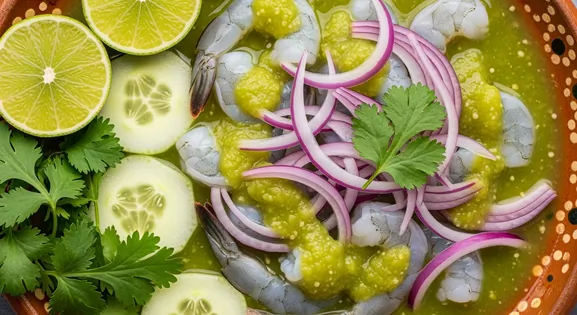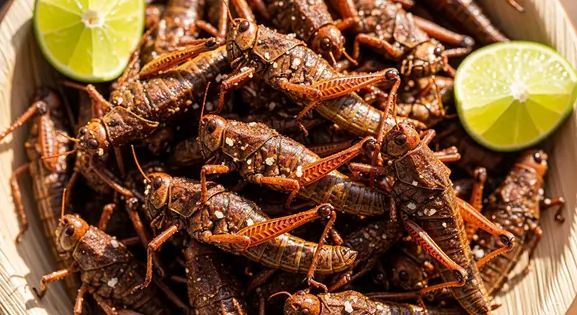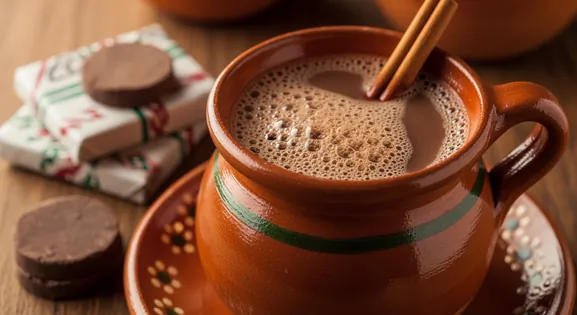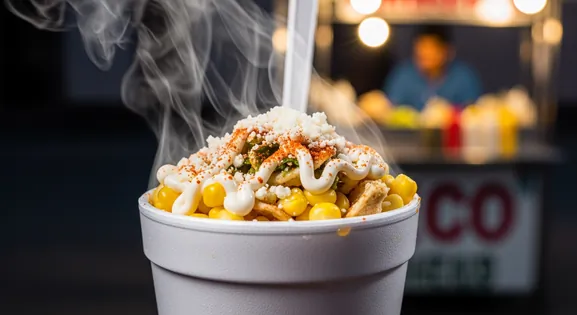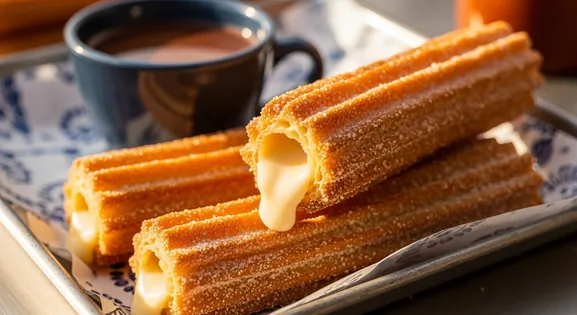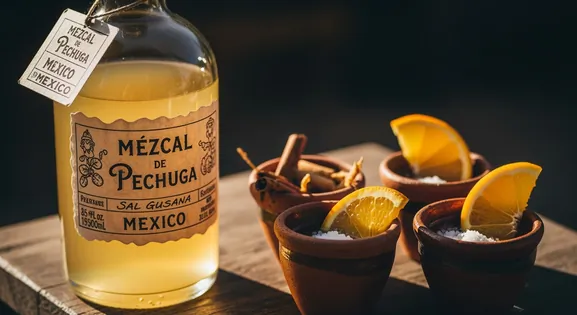Barbacoa de Chivo in Mexico: A Complete Food Lover's Guide
Barbacoa de Chivo

About Goat Barbacoa
Barbacoa de Chivo is a quintessential Mexican dish, particularly revered in states like Oaxaca. It involves slow-cooking goat meat, often marinated in a rich adobo of dried chilies and spices, until exceptionally tender and flavorful. Traditionally cooked in an underground pit lined with maguey leaves ('en pozo'), it boasts a unique smoky depth. Served shredded in tacos or by weight with warm corn tortillas, fresh garnishes, salsa, and its savory consommé.
Spotting Quality: What to Look For
What to Look For
-
Meat kept visibly steaming hot
Ensures the meat is held at a safe temperature (above 60°C / 140°F) to prevent bacterial growth. Look for steam rising from the pot or serving container.
-
Consommé served piping hot
The broth should be very hot, not lukewarm. This indicates proper temperature control and enhances safety and flavor.
-
Clean serving area and utensils
Check for clean cutting boards (ideally separate for raw/cooked, though barbacoa is usually handled cooked), knives, condiment containers, and vendor hand hygiene.
-
High customer turnover (busy vendor)
Popular stalls usually mean the food is fresh and doesn't sit around for long periods. Locals lining up is often a good sign.
-
Vendor reputation (ask locals)
If possible, ask locals for recommendations. Established vendors known for quality are generally safer bets.
What to avoid
-
Meat sitting out at room temperature or looking dry/old
Barbacoa should be moist and kept hot. Avoid vendors where the meat looks like it's been sitting uncovered or unheated for a while.
-
Lukewarm consommé
Broth not kept sufficiently hot indicates improper temperature control, which can compromise quality and freshness.
-
Dirty stall or poor vendor hygiene
Visible grime, flies, or vendors handling money and food without washing hands/using gloves are red flags.
-
Re-heated barbacoa (unless done properly)
Freshly cooked or properly hot-held barbacoa is best. Be cautious if it seems like leftovers are being quickly reheated.
How to Order Goat Barbacoa
What to Serve with This Dish
Consomé
Broth
The rich, savory broth collected during the barbacoa's cooking process, often served alongside to sip or dip tacos, enhancing the overall flavor experience.
Fresh Corn Tortillas
Staple
Warm, soft corn tortillas are essential for making tacos, providing a neutral base that perfectly complements the rich, tender barbacoa meat.
Explore Goat Barbacoa in Detail: City Guides
Discover where to find the best Goat Barbacoa and learn local tips in these cities:
The Story Behind the Dish
The term 'barbacoa' originates from the Taíno word 'barabicu', referring to slow-cooking meat over a fire or in a pit. This technique was adopted and adapted across Mexico, utilizing local meats and ingredients. Cooking barbacoa, especially for celebrations and weekend gatherings, is a deeply rooted tradition. Goat ('chivo') became a popular choice in regions suited for goat herding, like the semi-arid landscapes of Oaxaca, evolving into a distinct regional specialty.
Traditional Preparation Techniques
Preparation typically involves marinating the goat meat (often whole or large pieces) in an 'adobo' paste (dried chilies like guajillo or ancho, garlic, cumin, cloves, vinegar). Traditionally, the meat is wrapped in maguey (agave) leaves and slow-cooked for many hours (often overnight) in an underground pit ('pozo') heated with wood fire and rocks. Alternatively, it can be slow-cooked in large steamers or ovens. The drippings are collected to make the rich 'consomé'. The cooked meat is then shredded or chopped for serving.
Key Ingredients of Goat Barbacoa
Goat Meat (Chivo)
The star of the dish, typically young goat meat, chosen for its tender texture and distinct, slightly gamey flavor that stands up well to slow cooking.
Quality indicator: Look for fresh, well-marbled cuts from reputable butchers or vendors, indicating quality and flavor potential.
Dried Chilies (Chiles Secos)
A blend of dried chilies like guajillo, ancho, and pasilla are rehydrated and blended to form the adobo, providing the dish's characteristic color, depth, and mild heat.
Quality indicator: Quality chilies should be pliable, aromatic, and free from mold or excessive dust, ensuring a vibrant adobo.
Maguey Leaves (Hojas de Maguey)
These large, fibrous leaves from the agave plant are crucial for traditional 'en pozo' cooking, wrapping the meat to impart moisture, subtle flavor, and protect it during the long cooking process.
Quality indicator: Fresh leaves should be green and supple, not dry or brittle, indicating they will release their beneficial moisture and aroma effectively.
Local Goat Barbacoa Variations in Mexico
Barbacoa de Borrego
The same slow-cooking technique applied to lamb or sheep meat. More common in Central Mexico (e.g., Hidalgo, State of Mexico).
Birria de Chivo (Jalisco style)
While also slow-cooked goat, Birria is typically stewed (often in a pot rather than a pit) with a different adobo profile, sometimes including tomatoes, and often served as a soupier stew or crispy 'quesabirria' tacos.
Barbacoa variations by Adobo
The specific blend of chilies (e.g., ancho, guajillo, pasilla) and spices in the marinade can vary significantly by region and cook, affecting color and flavor.
Barbacoa Blanca
A less common variation, typically cooked with minimal seasoning or chilies, focusing purely on the meat flavor enhanced by maguey leaves and salt.
Dietary Information
Dietary Information
Important Note for Travelers: Your safety is our priority. Below are the common allergens associated with the traditional preparation of this dish. However, recipes and ingredients can vary significantly between establishments. Always confirm all ingredients directly with the food vendor before ordering, especially if you have a severe allergy.
Potential Allergens
Dietary Suitability
Frequently Asked Questions about Goat Barbacoa
What exactly is Barbacoa de Chivo?
Barbacoa de Chivo is a traditional Mexican dish featuring goat meat ('chivo') that is slow-cooked until incredibly tender, typically marinated in an adobo sauce made from dried chilies, spices, and vinegar. Often, it's cooked in an underground pit ('en pozo') lined with maguey leaves, imparting a unique smoky flavor. It's commonly served shredded in tacos or sold by weight, often accompanied by its flavorful cooking broth ('consomé').
How does Barbacoa de Chivo taste?
It has a rich, savory, and slightly gamey flavor characteristic of goat meat, balanced by the complex, mildly spicy, and aromatic notes from the adobo marinade. The slow cooking process makes the meat extremely tender and moist. The accompanying consommé is a deeply flavorful broth.
How can I ensure quality when eating Barbacoa de Chivo from street vendors or markets?
To ensure quality, choose established and popular vendors. The long, slow cooking process ensures thorough cooking. Look for key indicators: meat kept steaming hot, consommé piping hot, a clean serving area, and high customer turnover. Prioritize vendors busy with local patrons.
What's the difference between Barbacoa de Chivo and Barbacoa de Borrego?
The main difference is the meat: 'Chivo' means goat, while 'Borrego' means lamb/sheep. While both are slow-cooked barbacoa style, lamb barbacoa is more common in Central Mexico, whereas goat barbacoa is particularly popular in regions like Oaxaca and parts of Northern Mexico. The flavor profile differs, with goat being slightly gamier.
Is Barbacoa de Chivo gluten-free?
The core barbacoa meat and consommé are naturally gluten-free, made from goat, chilies, and spices. It's typically served with corn tortillas. While corn is gluten-free, always confirm tortillas are 100% corn ('puro maíz'), as some may contain wheat flour. Also, be aware of potential cross-contamination in busy kitchens.
What is the consommé served with barbacoa?
The consommé is the rich, flavorful broth collected during the barbacoa's slow-cooking process. It contains meat juices, rendered fat, and adobo seasonings. Often served hot in a cup, sometimes with chickpeas, rice, cilantro, onion, and lime, drinking it alongside the barbacoa is a traditional and essential part of the meal.
Expert How-To Guides about Goat Barbacoa
How to Spot a Good Barbacoa Vendor
Learn how to identify reputable vendors and recognize the signs of high-quality, safely prepared barbacoa for the best culinary experience.
- Look for steam: The meat should be visibly steaming in its container, indicating it's being kept properly hot.
- Check the consommé: It should be served piping hot.
- Observe cleanliness: The stall, cutting surfaces, utensils, and condiment containers should look clean and well-maintained.
- High turnover: A busy stall, especially with local patrons, usually signifies fresh, popular, and trusted barbacoa.
- Ask about the origin/style: Reputable vendors might proudly mention if it's cooked 'en pozo' (in a pit) or their specific regional style.
- Trust your senses: Avoid places with unpleasant smells or meat that looks dry or old.
How to Eat Barbacoa Like a Local
Master the authentic way to enjoy Barbacoa de Chivo, from ordering to garnishing, ensuring a truly local and satisfying culinary adventure.
- Order by taco or weight: Get individual tacos ('tacos de barbacoa') or buy by the kilo/half-kilo ('medio kilo') to make your own tacos.
- Get the consommé: Always order a side of the hot broth ('consomé') to sip alongside or even dip your taco into.
- Add condiments: Top your tacos with finely chopped white onion, cilantro, a squeeze of lime juice, and salsa (ask for 'salsa que no pica' if you prefer mild).
- Use corn tortillas: Traditionally served with warm corn tortillas.
- Eat immediately: Barbacoa is best enjoyed fresh and hot.
- Enjoy on weekends: Barbacoa is especially popular for breakfast or lunch on Saturdays and Sundays.
Our Commitment to Quality
At Tasteplorers, our mission is to provide the most accurate and useful travel information in the world. To achieve this, all content on this site is created through our unique editorial framework. We utilize leading AI research tools, guided by our proprietary prompts, and a multi-stage validation process. This entire system is overseen by our editorial team to ensure everything we publish meets our high standards for accuracy, cultural nuance, and practical value for travelers.
Learn more about our Editorial Process and our Mission.
Explore regions
Europe
Discover Europe's diverse culinary landscape, from Mediterranean flavors to hearty Alpine fare. Learn to navigate markets, decode menus, and eat like a local.
Latin America & Caribbean
Discover the vibrant cuisines of Latin America & the Caribbean. Our expert guide covers everything from Mexican street food to Peruvian ceviche and market tips.
Oceania
Explore Oceania's diverse food scene. Learn about Polynesian earth ovens, Fijian feasts, and the vibrant café culture of Australia and New Zealand.
Southeast Asia
Explore Southeast Asia's diverse food cultures from Thailand to Vietnam. Get expert tips on navigating spice levels, choosing quality vendors, and understanding the rich traditions of the region.
